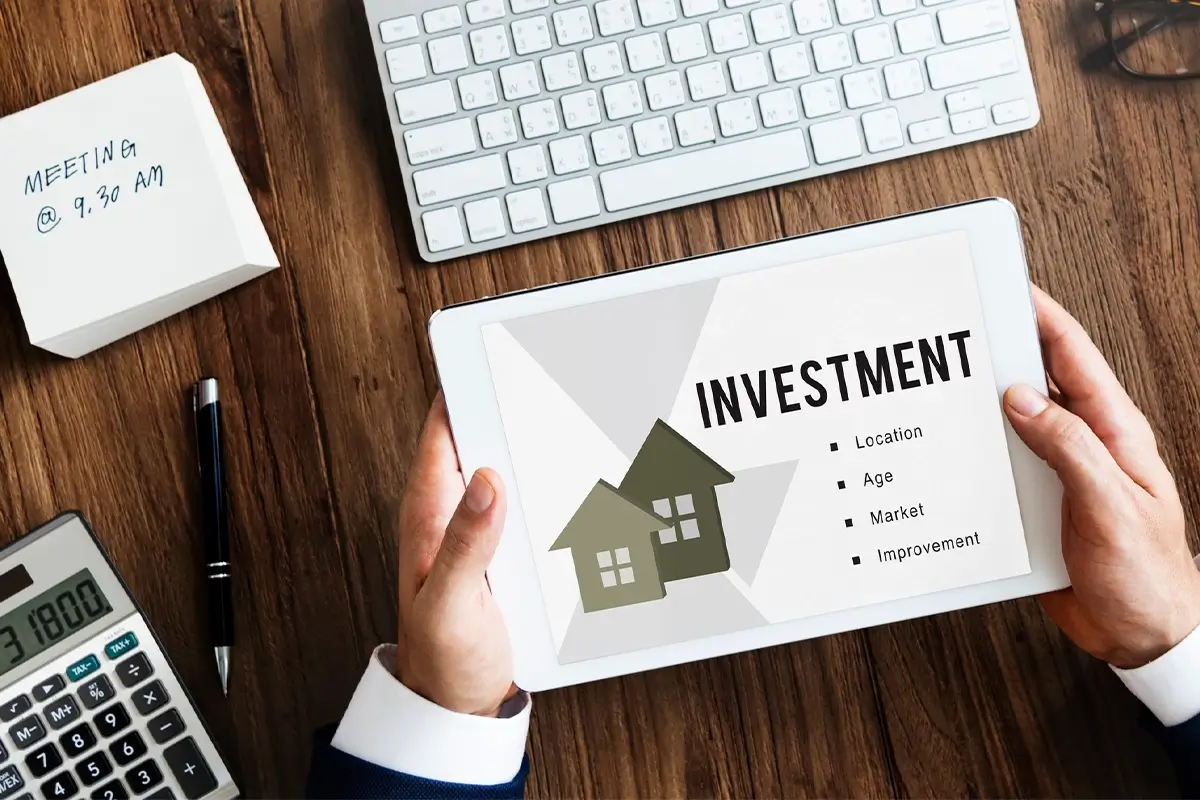Contents
- Price vs Value – Start With the Right Mindset
- Start With Local Market Research
- Compare With True Property Equivalents (Comps)
- Read the Market Mood (Demand-Supply Reality)
- Inspect the Property Carefully – Beyond Photos
- Analyse Numbers – The Smart Buyer’s Shield
- Look Out for Hidden & Extra Costs
- Evaluate Future Value & Appreciation Potential
- Check Builder Reputation & Legal Clarity
- Use Professional Tools (But Don’t Rely Only on Them)
- Convert Research Into a Smart Negotiation
- Final Thoughts – When Is a Property Truly Worth the Price?
Buying a home is one of the most emotional and financially significant decisions anyone makes. Yet the biggest fear every homebuyer has is simple: How to know if a property is worth the price? The asking price you see online or in a brochure is often not the true market value. Sellers quote higher, markets fluctuate, and different homes—even in the same building—can have wildly different values.
This property valuation guide walks you through a practical, beginner‑friendly, and data‑backed method to understand real estate price evaluation, verify value, compare similar homes, and avoid overpaying. It is written in a simple, conversational tone so any buyer can use it confidently.
Whether you're buying your first home or an investment unit, the following sections act as a home buyer price checklist, covering everything from property market research to property price verification, future growth, hidden charges, and smart negotiation methods.
Price vs Value – Start With the Right Mindset
Before diving into numbers, it's important to separate price from value, because both behave very differently in the real estate world. Understanding this distinction helps you approach the buying process with far more clarity and confidence.
Price = What the seller wants
Value = What the property is actually worth in the market
Many sellers quote a price with a 5–10% negotiation buffer. Emotional buyers often accept it without checking the factors that determine property value.
What Buyers Should Remember?
-
Sellers expect negotiation—never accept the first quote.
-
Emotional bias shouldn’t impact what you pay.
-
Real estate pricing is influenced by demand, condition, location, and the overall buyer vs seller market conditions.
Your job is to find the fair property price check, ensuring the price aligns with real market value rather than assumptions. This mindset helps you stay objective and prevents you from agreeing blindly with the seller’s expectations.
Start With Local Market Research
If you're wondering how to check property price, start with micro-market analysis, because this is where true pricing clarity begins. Property value varies drastically between locations, and understanding these micro-shifts helps you stay grounded in reality rather than assumptions. By analysing smaller neighbourhood clusters, you gain deeper insight into how pricing behaves across even the most specific pockets of the market:
-
Cities
-
Neighbourhoods
-
Individual streets
-
Even wings within the same project
How to Perform Property Market Research?
-
Check actual sale prices (not listing rates) from the last 6–12 months.
-
Study portals to check the market value of property in the exact micro-location.
-
Compare homes of the same type—flat vs villa vs plot.
Why Localised Research Matters?
This helps you detect signs that a property is overpriced and lets you create a realistic price range. If a unit is priced outside the neighbourhood price analysis range without unique advantages, it is likely overpriced.
Compare With True Property Equivalents (Comps)
To understand how to compare similar properties before buying, you must identify real comps—not just similar BHKs. This step allows you to filter out surface-level similarities and focus on meaningful value differences that truly impact pricing.
Property Comparison Methods
-
Carpet area vs super built-up value
-
Floor level and elevation
-
Ventilation and layout
-
View (garden/sea/city)
-
Age of building and maintenance
-
Parking type
-
Amenities
This is where real estate comps India comes into play—comparing truly similar units. If the seller’s price is far above comparable properties with no strong difference, the home’s value cannot be justified.
Read the Market Mood (Demand-Supply Reality)
Even a realistically priced home may sell above or below its true value based on real estate demand-supply evaluation, as shifting market dynamics can heavily influence how buyers and sellers behave. These fluctuations make it essential for homebuyers to understand current trends before making any pricing decisions.
How to Read Real Estate Market Trends?
-
How many homes are selling vs sitting unsold?
-
Are prices rising or dropping monthly?
-
Are homes selling fast (hot market) or slowly (cold market)?
-
Are multiple buyers competing for similar homes?
Buyer vs Seller Market Conditions
-
Seller’s Market: Low supply, high demand → higher prices
-
Buyer’s Market: High supply, low demand → negotiation power
Timing matters. Understanding the market gives you an advantage during property price negotiation, helping you choose the perfect moment to make an offer with maximum leverage. A well‑timed negotiation can reduce your costs significantly and increase your chances of securing the deal.
Inspect the Property Carefully – Beyond Photos
A property may look perfect online, but true value lies in its physical condition. Photos rarely reveal structural issues, ageing systems, or hidden repair needs that can significantly impact long‑term costs. Seeing the home in person helps you understand whether the price truly matches its actual condition.
Property Inspection Checklist
-
Building age, water leakage, seepage, and cracks
-
Plumbing, electricals, flooring, fittings
-
Natural light and cross ventilation
-
Layout efficiency (avoid wasted corridors)
-
Noise levels, surroundings, safety
Home Price Factors Inside the Unit
-
Upgraded kitchen or bathroom
-
Larger balcony, corner flat advantages
-
Better view or privacy
Real estate price evaluation must include a physical inspection. A property needing repairs immediately reduces its fair price, because every unnoticed defect eventually becomes an additional financial burden. When you factor repair costs into your assessment, the true value of the property becomes much clearer and far more realistic.
Analyse Numbers – The Smart Buyer’s Shield
Whether you’re an end-user or investor, numbers protect you from emotional overpaying. They give you a clear, unbiased lens to evaluate the true worth of a property beyond marketing, emotions, or seller expectations. When your decisions are backed by facts, you avoid costly mistakes and negotiate from a position of strength.
For End Users
-
Use EMI calculators to check affordability.
-
Add renovation cost to the final price.
-
Compare maintenance costs across properties.
For Investors
-
Do a rental yield calculation.
-
Assess the realistic vacancy rate.
-
Study neighbourhood rental demand.
Property Worth Calculation
A good value property gives you long-term stability and resale potential. Emotions choose the home; numbers decide the right price, helping you stay financially disciplined and focused on long-term returns.
Look Out for Hidden & Extra Costs
One of the biggest mistakes—and one of the top valuation mistakes homebuyers make—is ignoring hidden charges. These costs often stay buried until the final stages of the deal, catching buyers off guard. Understanding them early ensures you evaluate the true financial commitment before saying yes.
Hidden Charges in Property Buying
-
Stamp duty & registration
-
GST on under-construction
-
Society formation charges
-
Maintenance deposit
-
Parking charges
-
Floor rise charges
-
Clubhouse or amenity charges
Always compare all-inclusive prices, not base rates, for accurate property price verification, because only a full-cost view reveals the true financial commitment. This prevents surprises later and keeps your evaluation grounded in real numbers.
Evaluate Future Value & Appreciation Potential
If you’re wondering how to estimate the future value of a property, consider that long‑term appreciation is never random—it follows infrastructure growth, demand cycles, and economic movement. Understanding these patterns helps you identify locations that will outperform the market in the coming years.
What Affects Property Value in India Long Term?
-
Metro expansions
-
Ring roads, flyovers, expressways
-
IT parks and commercial hubs
-
Schools, malls, hospitals
-
Gentrification of neighbourhoods
Upcoming Infrastructure Impact on Prices
Infrastructure creates demand → demand increases value → value influences pricing. Sometimes paying slightly more in a future-growth area is a smarter long-term decision.
Check Builder Reputation & Legal Clarity
If you want to know how to avoid overpaying for property, start with legitimacy. A property backed by strong legal clarity instantly reduces risk and safeguards your investment from unexpected complications. This foundation ensures every rupee you spend is protected by documented proof and regulatory compliance.
Verify Legality & Builder Background
-
Check RERA registration
-
Study the builder’s past delivery record
-
Confirm land titles and approvals
A legally clear, reputed-builder property has a stronger resale value of property and safer investment potential. It also attracts more serious buyers in the future because trust and compliance significantly increase market demand.
Use Professional Tools (But Don’t Rely Only on Them)
Technology offers quick insights, but not all tools reflect the nuances of real-world property conditions. Online estimators often use outdated public data, missing renovations, defects, and location-specific demand patterns.
Using tools the right way helps you validate your findings without depending solely on automated numbers. This balance is essential for accurate and confident decision-making.
Smart Ways to Use Tools
-
Use them as a rough guide.
-
Ask for a professional valuation report.
-
Cross-check with your personal research.
Online tools offer convenience, while experts offer depth. When combined with your own research, they give you the clearest picture of true property value.
Expert insights + your own analysis = the most reliable valuation.
Convert Research Into a Smart Negotiation
Once you analyse everything, decide with clarity and confidence, using the data you’ve gathered to set firm boundaries. This ensures your negotiation is rooted in facts—not emotions or seller pressure. Now decide:
-
Your maximum price
-
Your justification for negotiation
-
Your walk-away point
Property Price Negotiation Tips
-
Always negotiate with data.
-
Present comps, physical condition issues, and hidden charges.
-
Be willing to walk away—this increases your leverage.
Negotiation is not guesswork—it’s a structured, data-backed method that rewards buyers who come prepared with facts instead of emotions. When you negotiate using evidence, comps, and logic, you naturally gain more control over the conversation and the final price.
Final Thoughts – When Is a Property Truly Worth the Price?
A property is worth buying when several crucial checks align, giving you both financial confidence and long-term clarity. This decision should feel logical, well-supported, and backed by evidence rather than emotion. A property is worth buying when:
-
It fits within the realistic check market value of the property range.
-
It passes legal, location, and structural checks.
-
It aligns with your budget and long-term goals.
-
Future infrastructure supports appreciation.
-
You can confidently justify the price through how to assess real estate value.
If a property passes this entire property buying checklist for homebuyers, you’re not just buying a house—you’re making a smart, secure financial decision. And when you're ready to explore verified, well‑evaluated projects across major Indian markets, visit Proplaunch360 for expert‑curated listings and smarter property decisions.
This guide ensures you never have to wonder how to know if a house is overpriced again—you’ll know exactly how to evaluate a property with clarity, confidence, and strategy.








